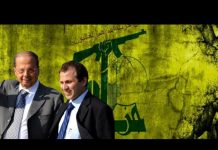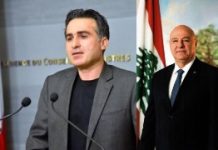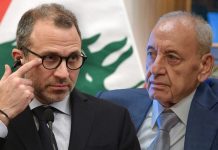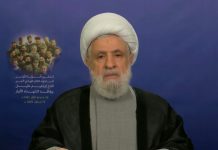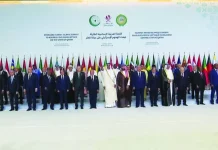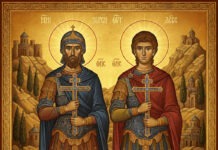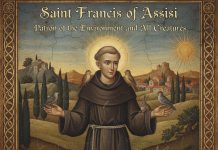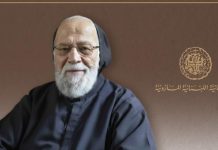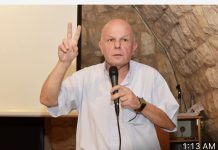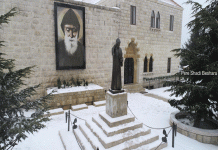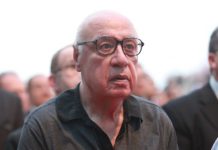Saint Rafqa
Maronite Heritage Site
The Lebanese Maronite Nun (1832-1914)
1- Rafqa in Himlaya (Lebanon) (1832-1859)
St. Rafqa was born in Himlaya, one of the villages of northern Metn, on June 29, 1832. She was the only child to her parents Mourad Saber el-Chobok el-Rayess and Rafqa Gemayel.
On July 7, 1832 she was baptized and christened Boutroussieh. Her parents taught her the love of God and daily praying.
In 1839, when she was 7 years old, Rafqa lost her mother whom she dearly loved. Her father went through poverty, so he sent her to Damascus in 1843 to serve for four years at Assad Badawi’s who was of Lebanese origin.
Rafqa came back home in 1847, to find that her father had married another woman named Kafa. Rafqa was beautiful, pleasant, humorous, pure and tender with a serene voice. Her aunt wanted her to marry her son, while her stepmother wanted her to marry her brother, and the conflict emerged. Rafqa felt bad about this and chose to enter the monastic life.
2- Rafqa in the Congregation of St. Mary (1859-1871)
Rafqa asked God to help her achieve her desire, so she went to Our Lady of Deliverance monastery in Bikfaya, to become a nun, accompanied by two girls, whom she met on the road. When she entered the monastery church she felt deep joy and happiness. One look at Our Lady of Deliverance Icon and God’s voice inviting her to devotion was strongly engraved in her: “You’re becoming a nun.” The Mother Superior accepted her without any interrogation, so she entered the monastery, and refused to go back home when her father and stepmother came to discourage her. Therefore Rafqa became a student, and on St. Joseph day on March 19, 1861, she wore the Initiation Robe.
On March 19, 1862, Rafqa presented the monastic vows in the monastery of Ghazir. The new nun stayed with the nun Mary Gemayel, in Ghazir’s clericalism, run by the Jesuits.
The purpose was to teach the girls who wanted to enter the congregation of St. Mary. In addition to teaching, Rafqa was in charge of the kitchen service. Amongst the clergy, were Patriarch Elias Houwayek, Archbishop Boutros el-Zoghbi and others. While in Ghazir, she studied Arabic language, calligraphy and calculation.
During her stay in Ghazir, and in 1860, Rafqa was sent to Deir el-Kamar, to teach youngsters catechism. And during the bloody events that took place in Lebanon back then, Rafqa saw with her own eyes many people getting killed. She was strong and courageous enough to hide a child under her robe and save him from death. Rafqa spent almost a year in Deir el-Kamar, then she went back to Ghazir passing by Beirut.
In 1863, following the orders of her superiors, Rafqa went to the school of the monastic order in Byblos, where she spent more than a year, teaching girls education and faith. Early in 1864, she was transferred from Byblos to maad village, upon the request of the great benevolent Antoun Issa; There she spent seven years and established with another nun, a school to teach girls.
3- Rafqa in the Lebanese Maronite Order (1871-1914)
A- In the monastery of St. Simon el-Qarn in Aito:
While living in maad, and following a crisis in the Congregation of St. Mary in 1871, Rafqa entered St. George’s church, and asked God for help, and she heard a voice calling her: “You’re becoming a nun.” Rafqa prayed, and saw in her dreams St. George, St. Simon, and St. Anthony the Great, father of the monks, who told her: “become a nun in the Lebanese Order.”
Mr. Antoun Issa made it easy for her to go from Maad to the monastery of St. Simon el-Qarn in Aito. She was immediately accepted, and wore the Initiation Robe on July 12, 1871, then presented her vows on August 25, 1872, and was named the nun Rafqa after her mother. In the monastery of St. Simon el-Qarn in Aito, Rafqa spent 26 years from 1871 to 1897. She was a role model to other nuns, recalling the regulations, praying, living in austerity, sacrificing and working in silence. On the first sunday of October 1885, she entered the convent church and began to pray, asking God to make her a part of his divine pains.
God responded immediately, as the unbearable pains began in her head and moved to her eyes. All attempts to cure her failed. After that, it was decided to send her to Beirut to receive treatment, and she passed by St. John-Marc’s church in Byblos, where an American doctor examined her. During the surgery, he accidentally pulled out her right eye. Then the disease hit the left eye, and the doctors considered the treatment useless. After all that, she returned to her monastery where she suffered from terrible pains in her eyes for 12 years. She remained patient, silent, praying in joy sharing the pains of Jesus.
B- In St. Joseph monastery al-Dahr in Jrabta:
When the Lebanese Maronite Order decided to build the monastery of St. Joseph al-Dahr in Jrabta, Batroun in 1897, six nuns of St. Simon monastery were sent to the new one under the supervision of Mother Ursula Doumit from Maad. Rafqa was among them. In 1899, she lost the sight in her left eye and became blind. With this, a new stage of her suffering began. Rafqa lived the last phase of her life blind and crippled. Total blindness, unbearable pain in the sides and weakness in the body, only her face was spared and remained shining till the end. Her right hip and leg were disjointed, the bone of her shoulder altered its position, and the vertebra became so apparent. Only her hands stayed intact, she used them to knit socks and clothes. She always thanked God for sparing her hands, and always thanked him for making her a part of his divine pains. On March 23, 1914, Rafqa rested in peace, after a life of praying, service and suffering. She was counting on the Mother of God and St. Joseph. She was buried in the cemetery of the monastery. On July 10, 1927, her body was transferred to another shrine in the corner of the temple of the monastery, following the beginning of the case of her beatification on December 23, 1925, and the initiation of investigating her sainthood on May 16, 1926.
Pope John Paul II declared her:
· Venerated on February 11, 1982
· Beatified on November 17, 1985
· Role model in the adoration of the Eucharist in the Jubilee year 2000
· Saint for the whole church in June 10, 2001
TESTIMONY
The Testimony of Skip Yarrington
Skip Yarrington is an American who received a healing grace through the intercession of St. Rafqa, in 2002.
In September [2002] I was diagnosed as having cancer in my ear. I was sent to Ann Arbor, MI to see a specialist. Our friends (Joan and Bob Held) went with us. We went early enough to go to Mass at Domino’s Farms, where we met Bob and Joan’s son Tom who accompanied us at Mass. After Mass Tom introduced us to his friend, a Maronite priest, Father Antonio, who had only by the grace of God been the celebrant at Mass that morning. Father gave my wife and me a special blessing and told us to pray for the intercession of Saint Rafqa (Rebecca). When we met with the doctor it was determined that I had a very aggressive form of cancer, called merkle cell, and that I would have to have most of my ear removed in order to get the cancer – the outlook was not very good. However, when we arrived back in Ohio a niece-in-law had made and dressed a beautiful doll for my wife. Much to our surprise she had named the doll Rebecca and had printed it on the back of her neck!
Additionally, my sister-in-law, Inis, had just learned about Saint Rebecca and had begun praying to her for my recovery. She told us that she is the patron saint of cancer sufferers. To my knowledge Fr. Antonio had no knowledge of this particular charism of the good saint. Consequently, my wife, family and friends were then asked to begin praying to Saint Rebecca. The next time we went see the surgeon, who was to do the surgery, my ear had healed to some extent, and he determined that something was not quite right. After many phone calls he learned that the wrong biopsy had been sent in and it seemed that we were just about to square one.
We were again sent back to Ohio to give the doctor time to sort through all the medical information. Finally, the doctor did perform surgery in December, but instead of having my entire ear removed, he was able to get the tumor and left my ear intact with just a small amount of plastic surgery needed. My last appointment with the doctor was in January and no sign of cancer remains. He told me to be alert to any unusual signs that could appear. But in the meantime I feel that all the prayers that were sent to Saint Rebecca for her intercession has helped me!
Sincerely,
Skip Yarrington
http://www.maronite-heritage.com/Saint%20Rafqa.php

